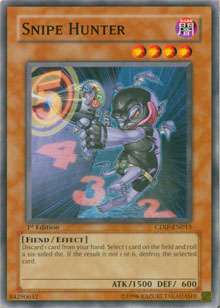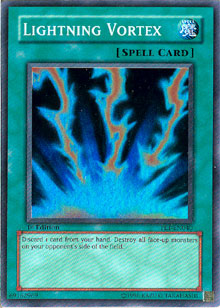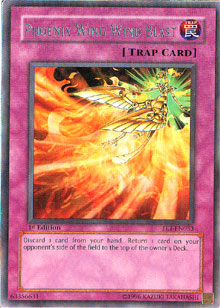Since returning to my post here at Metagame I’ve spent a great deal of time catching up. There’s no two ways about it; when you’re used to traveling to big tournaments once, twice, even three times a month and observing the North American metagame as it develops, a four month hiatus really lays you out. I did a ton of studying and talking to players before doing coverage at Canadian Nationals, and I’ve continued to do so over the past few Championship weeks.
 In observing various metagames so closely I’ve noticed a lot of interesting trends and paradigm shifts. One stands out to me as a particularly peculiar paradox: the nature of the conflict between synergy and utility in the current Advanced format. On one hand, it’s well-acknowledged that this is one of the most aggressive formats of all time. Tempo, momentum, and the harried pursuit of the ultimate single-turn victory have taken a tremendous priority over card presence, much more so than any era I can personally recall. Utility is king: if you can’t play the cards in your hand your opponent will make you pay for that (almost instantly in most cases). With Raiza the Storm Monarch seeing such heavy play even bluffing with a non-chainable spell or trap is a risk many players refuse to take. Duelists continue to pare the potential dead cards from their decks, a strategic decision that factored into multiple Top 16 appearances at US Nationals.
In observing various metagames so closely I’ve noticed a lot of interesting trends and paradigm shifts. One stands out to me as a particularly peculiar paradox: the nature of the conflict between synergy and utility in the current Advanced format. On one hand, it’s well-acknowledged that this is one of the most aggressive formats of all time. Tempo, momentum, and the harried pursuit of the ultimate single-turn victory have taken a tremendous priority over card presence, much more so than any era I can personally recall. Utility is king: if you can’t play the cards in your hand your opponent will make you pay for that (almost instantly in most cases). With Raiza the Storm Monarch seeing such heavy play even bluffing with a non-chainable spell or trap is a risk many players refuse to take. Duelists continue to pare the potential dead cards from their decks, a strategic decision that factored into multiple Top 16 appearances at US Nationals.
Before we go any further, let me take a second to give you a brief reminder: a card’s “utility” is its average usefulness. A card’s overall utility, the context in which this factor is usually discussed, takes into consideration how useful a card is in the opening of a duel (turn 1 when you go first), the early game (developing turns), the mid-game (the most complicated turns in terms of card presence), and the late game (topdecking). It’s one of the many ways to evaluate a card’s viability, and it’s a very important factor in aggressive environments; cards with high utility are necessary in fast games, where you may not have the time to wait around for combos to materialize.
On the other side of the conceptual scale is synergy, the opposite of utility. A card’s synergy is an abstract measurement of its potential to work with other cards, creating combos that are greater than the sum of their parts. A card high in synergy but low in utility is good for a slower environment, where the average player is going to have time to put together those big plays. Understanding the diametric opposition between utility and synergy is, in my opinion, fundamental to successful deckbuilding. Too much emphasis on utility will create a solid “bottom line” for your deck, but you’ll be outperformed a percentage of the time by big combo decks. Focus too much on synergy, and you’ll find that you suffer from bad topdecks and poor opening hands more often than is acceptable.
All this begs the Question: if this is a fast environment that naturally favors high utility, why are synergy-dependent combo decks still winning?
The answer is a unique one, and I don’t think it’s one we’ve ever really seen before. Sure, on one hand, explosive combo decks that can win on turn 2 fit the description of a fast environment. However, I’m starting to see that there’s more to it than that. In the absence of high-utility cards for combo strategies, it’s becoming apparent that players are actually creating higher utility where it wouldn’t normally exist.
 Look at T-Hero, Bazooper, and Machine beatdown. Heck, go deeper and check out Dexter Dalit’s National Championship-winning Gadget build, or the Crystal Beast deck Adam Donahue went 6-0 with at US Nationals (Team Rampage had a near-identical build they backed away from at the last second at that event). Almost every successful deck in this format balances the low-utility cards it runs with discard costed effects. Exceptions to this rule comprise the bulk of the decks with declining popularity: Perfect Circle, Six Samurai, Demise OTK, and others. Snipe Hunter and Lightning Vortex are single-handedly making and breaking the current strategies in this format, not because they provide worthwhile effects, but because they help balance low-utility cards in a format where low utility is simply unacceptable.
Look at T-Hero, Bazooper, and Machine beatdown. Heck, go deeper and check out Dexter Dalit’s National Championship-winning Gadget build, or the Crystal Beast deck Adam Donahue went 6-0 with at US Nationals (Team Rampage had a near-identical build they backed away from at the last second at that event). Almost every successful deck in this format balances the low-utility cards it runs with discard costed effects. Exceptions to this rule comprise the bulk of the decks with declining popularity: Perfect Circle, Six Samurai, Demise OTK, and others. Snipe Hunter and Lightning Vortex are single-handedly making and breaking the current strategies in this format, not because they provide worthwhile effects, but because they help balance low-utility cards in a format where low utility is simply unacceptable.
It sounds simple, and I’m sure you’ve thought of it before. However, by placing it into the context of utility and synergy (and player intervention therein), we can look at the situation objectively and make some predictions.
Anything running low utility cards that can’t take advantage of this trend? Probably not going anywhere in this format. Expect Perfect Circle to continue losing popularity in favor of T-Hero, which integrates Snipe Hunter far better thanks to Destiny Hero – Disk Commander. In addition, expect decks that originally ran only one Snipe Hunter (such as Matt Peddle’s Machine beatdown) to start running more copies. I wouldn’t be surprised if Lightning Vortex, or even Divine Wrath and Phoenix Wing Wind Blast, started seeing more play in higher level competition.
 Don’t get me wrong — I’m not saying you have to run Snipe Hunter to succeed in this format. But if you have an idea that incorporates low-utility elements and it didn’t work the first time around, consider stacking that issue in your favor by adding some discard costed cards. There are actually quite a few good ones out there, and they can work wonders for decks that people have written off, or haven’t even really considered yet. Donahue’s Crystal Beasts are the perfect example of this, incorporating Lightning Vortex to balance the deck’s conditional draws while also providing some necessary field control. Previous versions of Crystal Beasts simply couldn’t outperform the top decks in this format over the long term, but Lightning Vortex brought it all together, turning an almost-there deck into a format-breaking powerhouse. Off the top of my head, I feel like Gravekeeper and Six Samurai decks could benefit from similar makeovers, albeit with different discard outlets.
Don’t get me wrong — I’m not saying you have to run Snipe Hunter to succeed in this format. But if you have an idea that incorporates low-utility elements and it didn’t work the first time around, consider stacking that issue in your favor by adding some discard costed cards. There are actually quite a few good ones out there, and they can work wonders for decks that people have written off, or haven’t even really considered yet. Donahue’s Crystal Beasts are the perfect example of this, incorporating Lightning Vortex to balance the deck’s conditional draws while also providing some necessary field control. Previous versions of Crystal Beasts simply couldn’t outperform the top decks in this format over the long term, but Lightning Vortex brought it all together, turning an almost-there deck into a format-breaking powerhouse. Off the top of my head, I feel like Gravekeeper and Six Samurai decks could benefit from similar makeovers, albeit with different discard outlets.
Discarding for effects is an essential part of this format. If your deck isn’t doing it, and it isn’t high on utility to begin with, you may want to reconsider what you’re playing. This hypothesis will be an easy one to brush off if you don’t care for it, but I think over the remaining months until September, we’ll see it proven to be true. The best players in the game right now are creating their own utility in order to supplement what might be lacking from their decks otherwise. Do the same, and it could be you in the winner’s circle at your next Regional or Shonen Jump Championship.